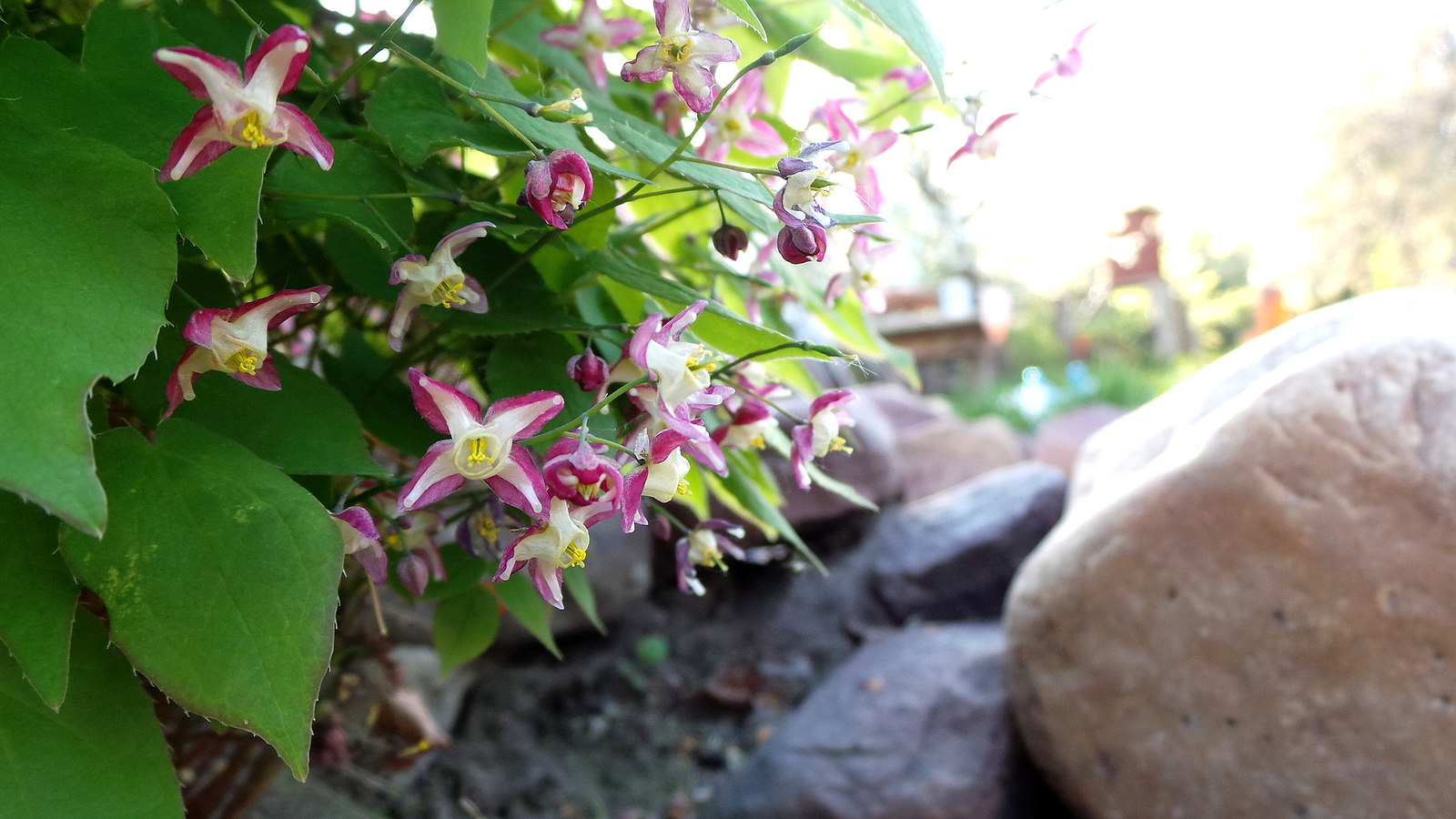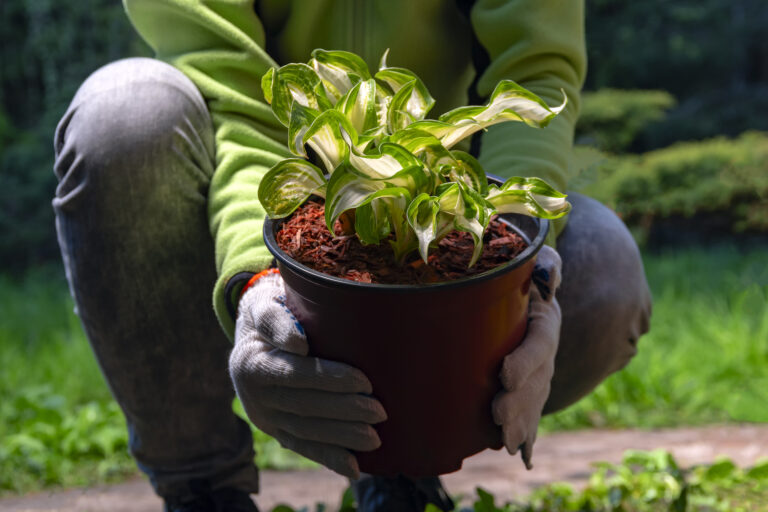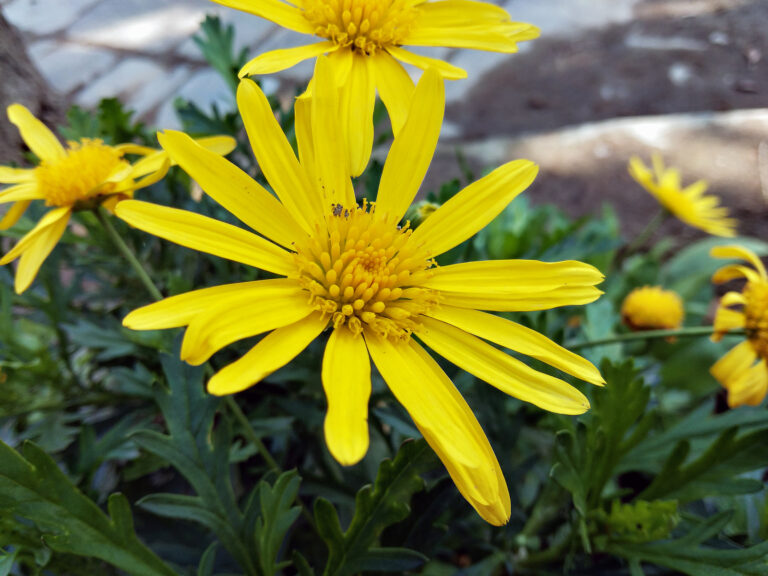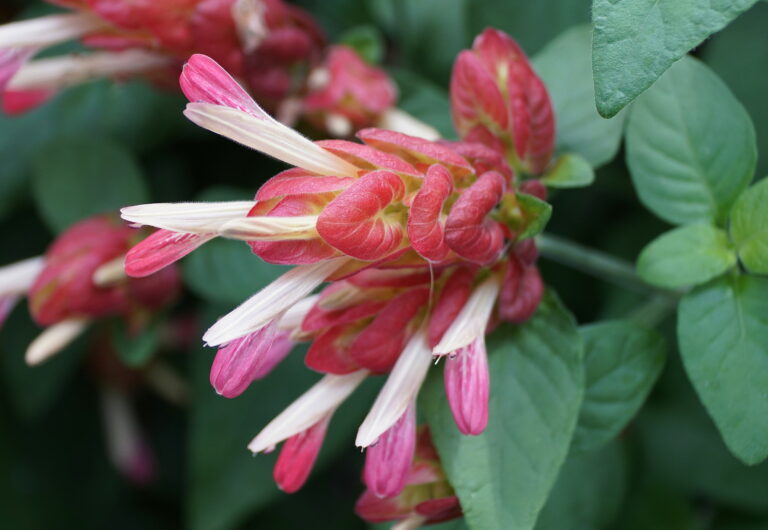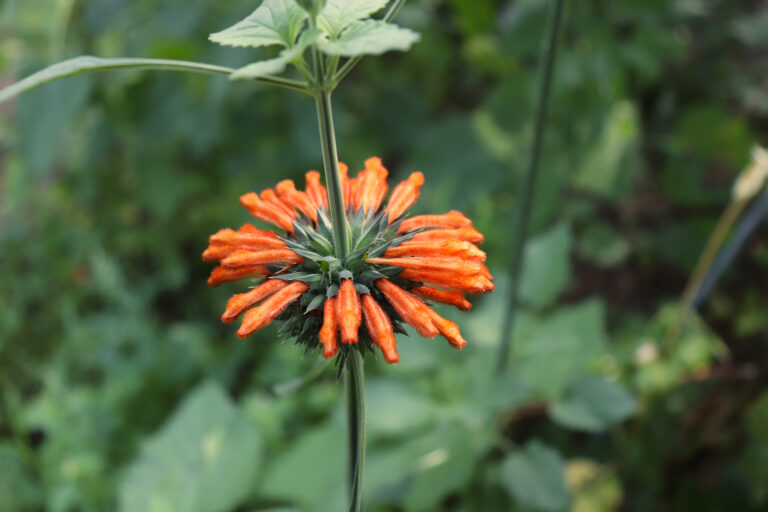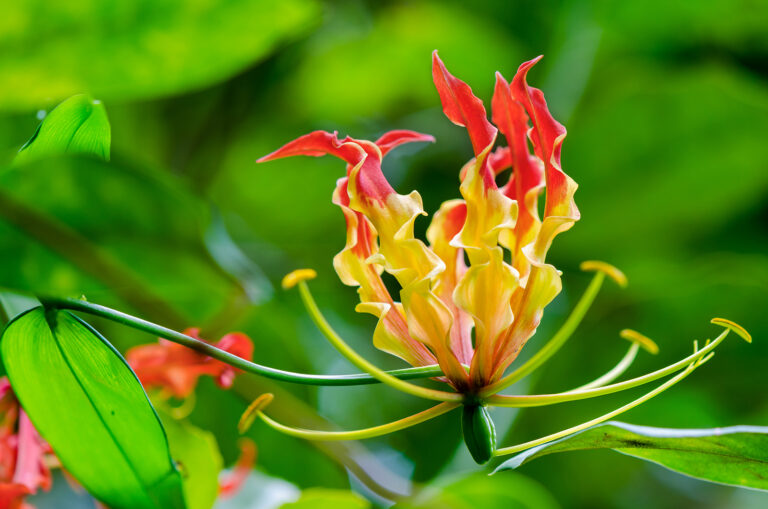How to Grow Bishop’s Hats — Epimedium
Epimedium–commonly called bishop’s hats–is a low-growing plant with foliage that is bronzy pink in spring, green in summer, and bronzy in autumn. In spring Epimedium produces loose spikes of small, waxy flowers that resemble tiny columbines. Flowers can be pink, red, red-orange, creamy yellow, or white.
Epimedium is a good choice as a ground cover under established trees or among rhododendrons, azaleas, and camellias. Epimedium competes well with surface-rooted trees. Epimedium prefers partial shade and tolerates heavy shade.
Epimedium flowers and foliage are long-lasting in arrangements.
The Epimedium genus contains between 30 and 40 species native to the Mediterranean region and eastern Asia.
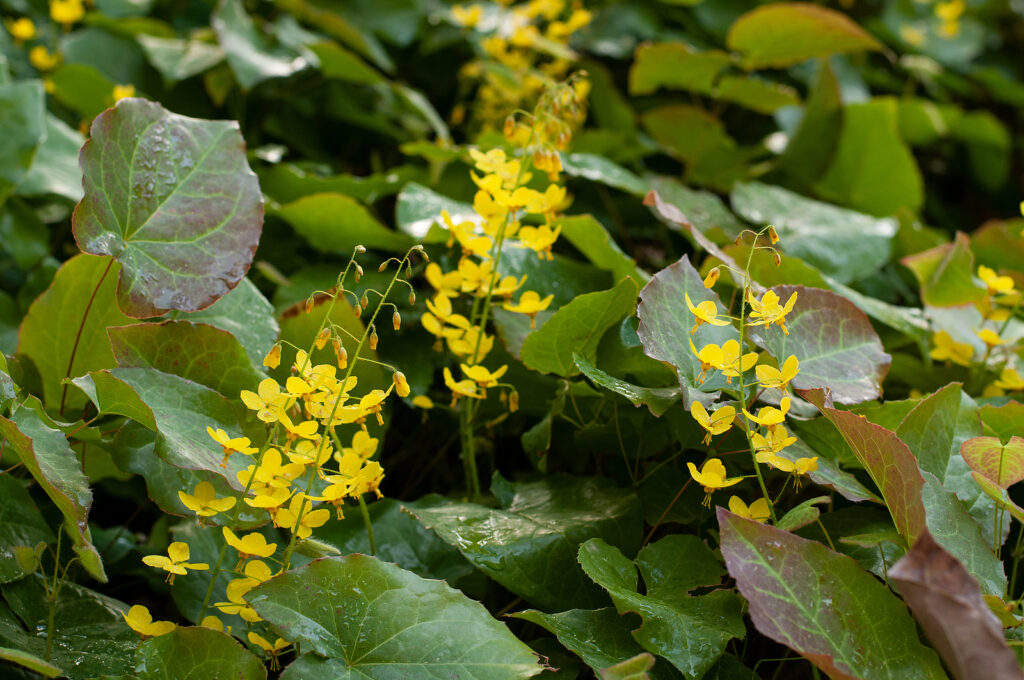
Get to know Epimedium
- Plant type: Perennial
- Growing zones and range: Zones 4 to 9 depending on the variety
- Hardiness: Hardy to -30°F (-34°C); hardy to to Zone 4
- Height and width: 6 to 15 inches (15-38cm) tall; 12 inches ( 30cm) wide
- Foliage: Low-growing plant with heart-shaped leaves, evergreen. New leaves start out bronze, expand to green, and show bronze in fall and winter.
- Flowers: Delicate flowers, some of which resemble bishops’ hats. The flowers are delicately winged and dangle from wiry stems, usually too low to the ground or close to the foliage to be seen by the casual observer.
- Flower colors: Red, pink, yellow, white
- Bloom time: Spring into summer.
- Uses: Dwarf perennial for the border or rock gardens or as a groundcover
- Garden companions: White daffodils and other white-flowered spring bloomers; complement winter-interest shade plants, such as coral bells and foam flower; subtle two-toned foliage echoes pink-flowered bleeding heart, hybrid lobelia, fringe cups, lungwort, and perennial geranium.
- Common name: Bishop’s hats, barrenworts
- Botanical name: Epimedium
- Family name: Berberidaceae
- Origin: the Mediterranean to temperate East Asia
Where to plant Epimedium
- Plant Epimedium in light shade (tolerates full sun).
- Plant Epimedium in good, moist, well-drained soil in a sheltered spot.
- Established plants tolerate dry shade; Epimedium can compete with the roots of established trees.
Epimedium uses and companions
- Use Epimedium as edging for beds and borders or along a walk or path.
- Use Epimedium in a shade or woodland garden combined with ferns and flowering perennials.
- Use Epimedium as ground cover under trees and shrubs.
- Good garden companions for Epimedium include Bergenia, Dicentra, Helleborus, Polygonatum, Primula.
When to plant Epimedium
- Set container-grown plants in the garden in spring or autumn.
- Sow seed in a cold frame in autumn.
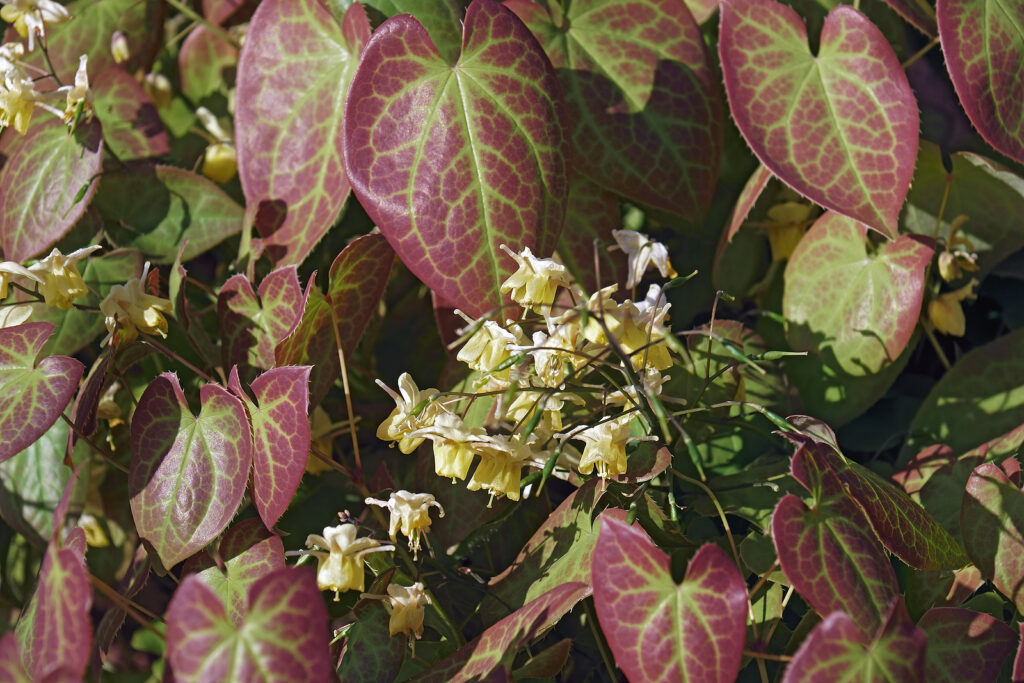
Planting and spacing Epimedium
- Space Epimedium 12 inches ( 30cm) apart; the plant grows slowly form 12 to 24-inch mounds.
How to water and feed Epimedium
- Keep the soil evenly moist; never allow Epimedium to dry out.
- Feed plants with an all-purpose, organic fertilizer in spring.
How to care for Epimedium
- Epimedium tolerates drought, dense shade, and competition from tree roots.
- Cut down the previous year’s foliage in late fall or late winter so that next year’s flowers are more visible.
- Mulch around Epimedium rather than cultivate, because the roots are shallow and can be easily damaged.
- There is no need to deadhead Epimedium.
Epimedium pests and diseases
- Epimedium is occasionally subject to viruses.
- Epimedium can be attacked by weevils.
Epimedium propagation
- Epimedium is best by divisions of rhizomes. Divide clumps in either fall or spring.
- Plants offsets that are easy to move.
- Root individual sections of rhizomes.
Epimedium varieties to grow
- Epimedium alpinum, Alpine barrenwort, has reddish-yellow flowers in mid-to-late spring and colorful full foliage; grows 6 to 12 inches (15-30cm) tall.
- E. grandiflorum, Long-spur barrenwort, from Japan and Korea, has the largest flowers. They are pink, yellow, or white and bloom in early summer; grows 9 to 12 inches (23-30cm) tall.
- E. pinnatum, Persian barrenwort, has vivid yellow blooms from late spring through early summer; grows 8 to 12 inches (20-30cm) tall.
- E. x rubrum, Red barrenwort, bears bright crimson flowers in spring, with reddish foliage that turns red-brown in fall; grows 1 foot (.3m) tall; best in Zones 4 to 8.
- E. x versicolor has tiny pink and yellow flowers in mid- to late spring. 1 foot (.3m) tall. The cultivar ‘Sulfureum’ has dark yellow flowers and makes a fast-growing ground cover; grows 8 to 12 inches (20-30cm) tall.
- Look for new species being introduced in China and Korea. Some are taller (E. davidii and E. x omeiense) or have showier flowers (E. brachyrrhizum).

